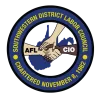The Strike that Brought Teachers Unions Back from the Dead
On the morning of September 10, 2012, the bells rang to open Chicago’s public schools, but there were no teachers in the classrooms.
The night before, negotiations with Chicago’s reform-minded mayor, Rahm Emanuel, had gone south, and the new activist leaders of the city’s 25,000-member teachers union, clad all in red, walked out. Surrounded by a throng of cameras, they declared that their members would go on strike for the first time in 25 years.
“It looks like a sure bet in hindsight, but at the time, not so much,” recalls Jesse Sharkey, a former high school social studies teacher and chess-team coach who was part of a new guard that took over the Chicago Teachers Union in 2010. “I can remember hearing, ‘They can’t do that!’”
City leaders had been closing schools for years as part of an education reform platform; teachers were becoming easier to fire under new accountability rules. But the strike was a risk they felt they had to take. “We were okay with it,” says Stacy Davis-Gates, who was one of the many black educators to walk out that day (she is now the Chicago union’s vice president). “We had no other choice.”
